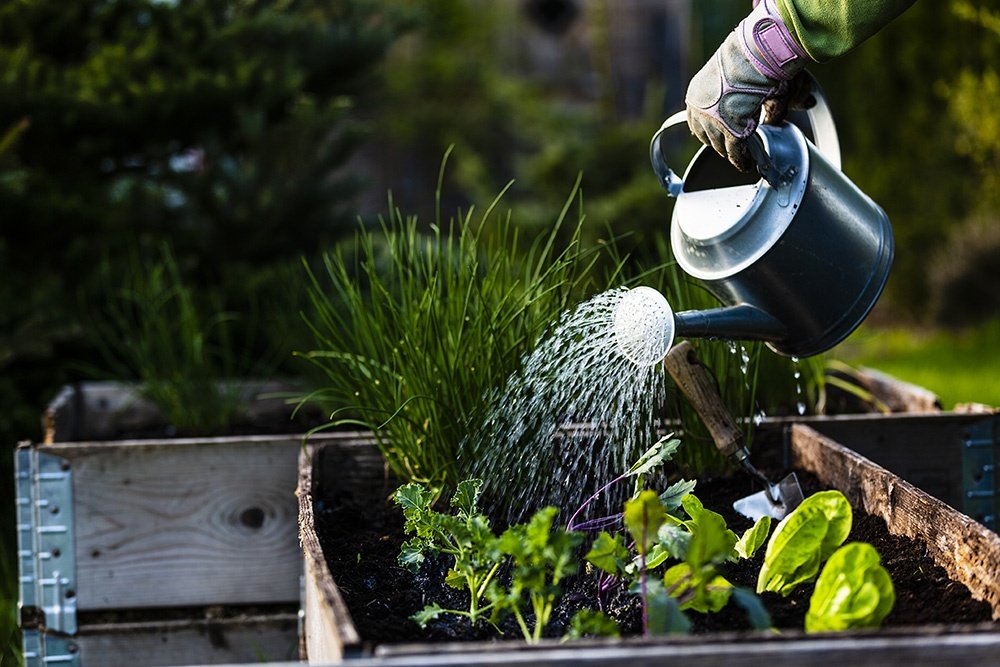There are those who believe they have a green thumb, and will populate their homes with plants regardless of the benefits mention below. Then there are those who think just having a plant near them, dooms the plant. They believe they killed the poor thing and therefore shouldn’t have one near them. It’s actually funny when you think of it. I almost don’t want to share that growing plants is more about science, than about having chemistry with plants.
Now, to say that caring for, and growing plants take work would be understandable. Those beautiful foliage need the right light placement, the right water content, and for some the right temperature. As much as they require work to keep them growing healthy and beautiful, they are also an important part of maintaining our wellbeing, our health, and our environment. It makes sense to surround yourself with plants for no other reason than the ones listed above.
A Few Quick Facts About Plants
For those who are not botanists but love plants, it may interest you to know there are about 390,000 different plant species that’s inhabiting our planet. Divided into four groups they are mosses, gymnosperms, angiosperms and ferns. Flowering plants, or angiosperms, are considered the most important plant group on earth. Why? Because they are a vital food group for us humans and animals alike. Consider our consumption of fruits, vegetables, nuts and grains. The fact is, plants are integral to our survival.
You don’t need to know the history of plants and its fundamental part of our food sources to appreciate and love plants. Its major importance aside, there are other wonderful benefits of surrounding yourself with plants, both indoor and outdoor. Let’s start with the indoor benefits. Here are five reasons you should make it a priority to get comfortable growing plants and forgo the idea that your thumb is just not green enough.
Indoor Plants

1. Plants Boost Productivity
The Journal of Environmental Horticulture published a study in 1996 that found having a plant in the workplace increases productivity 12 percent. That’s means better reaction time, better focus, and just being able to work more effectively. There are other ways plants contribute to productivity as well.
They reduces noise levels
Plants can reduce background noise. The proper placement of large potted plants contributes to a quieter work environment.
Cleans the air
An environment with little or no fresh air leads to headaches, fatigue and an inability to concentrate. Plants in an environment with improper air control can perform photosynthesis, reducing volatile organic compounds, and increasing oxygen to carbon dioxide ratio. The result is cleaner air.
Improves creativity
It is said, green invokes motivation, a need to improve, and complete tasks. Apparently, when we look at the color green just before a creative task, it boosts our creative outlet. It’s called the Green effect, coined by researchers who believe the color green is a signal of physical growth. You can read more about the Green Effect here.
2. Helps Recover Faster From Illnesses
A study done in 2002 noted that those recovering from illness or different types of surgeries recuperated faster when there is greenery to look at. They have shorter hospital stays and require less medication. While the study focused on hospital scenery and not home, it would be hard to believe the effect would be different at home.
3. Plants Reduces Stress
Plants can reduce stress psychologically and physiologically. They increase positive energy levels and help to feel more secure and relaxed. Perhaps having plants in the home is a reminder of being in the outdoors, connecting with nature and slowing our erratic lives.
4. Growing Plants Gives You A Sense Of Accomplishment
When we care for something, watch it grow or flourish, you cannot help but to feel pride and joy. Growing plants gives you a sense of achievement because you’ve chosen to claim ownership. Perhaps it’s realizing that caring for plants is more strategic science than luck.
5. Releases Water
Plants release almost all the water we give it. Roughly 97% of the water in plants releases back into the air. A set of plants placed together can increase a room’s humidity, which aids in respiratory distress. Also, plants can decrease dry skin, colds, dry cough and sore throats.
Outdoor Plants

Growing plants outdoor, or gardening is something many homeowners do to enhance the appeal of their homes. Depending on which part of the country you live in the United States, there is nothing more beautiful in the summer months than a home with a well-manicured lawn and flower gardening surrounding it.
While most of these homeowners love gardening for many reasons, most of them are not aware of how their actions positively affect our environment. It affects not just the air we breathe, but the carbon footprint we leave behind. Whether it’s a small patch in the backyard, a whole yard, or a container outside the window, outdoor gardening positively impacts our environment. Here are 5 ways outdoor gardening is a beneficial part of environmental change.
1. Growing Some Of Your Food Reduces Carbon Footprint
To be environmental conscious is to know that the food we buy in a grocery store typically travels halfway around the world, or from state to state to get to our tables. When we choose to grow our own food, we buy less from the grocer and reduces carbon footprint.
2. Naturally Clean the Ground and Air
We all know what photosynthesis is. Plants are a beneficial part of that process. They take in carbon dioxide from the atmosphere through their leaves and use it to expel oxygen and water. When we breathe, we expel carbon dioxide and plants take our waste and recycle it into something we need for survival. It’s safe to say that without plants we wouldn’t have fresh air to breathe.
3. Reduces Soil Erosion
Think of clogged storm drains, overflowing roads and streams. This happens when we have loose debris and sediments finding their way into these structures. To have a garden is to contribute to the reduction of soil erosions. Gardens hold soil in place, therefore reducing the likelihood of unwanted debris finding their way into structures that are necessary for our way of life.
4. Reduces Waste
In our post, Eco-Lifestyle, Changes To Make For A Better Environment, lose the bag is one recommendation. It’s worth saying again, every time you go to the grocery store, take one of those bags at most produce stand in the store, you are contributing to a negative effect of our environment. When you grow produce, there isn’t a need for these type of plastics that will end up in a landfill and will outlive you and me.
5. Gardens Promote Sustainable Agriculture
A choice to grow a garden, or to grow vegetables, is sustainable agriculture. Typical agriculture as it is today is taking a toll on our environment. Because of the way we produce our food, our environment is severely eroding. Growing what we need, eating what we grow, is the antithesis to how food is typically produced today.
Plants have been a part of life on earth since the dawn of time. It is as common as the air we breathe, perhaps because it handles the air we breathe. It’s why a change in our environmental lifestyle is so needed. As technology advances, and high-tech becomes a way of life, we realize that perhaps we’ve taken for granted something we can effectively loose. Suddenly, a plant-based life is something we not only appreciate but want to nurture. Inside plants, outside gardens, is a great place to start.








